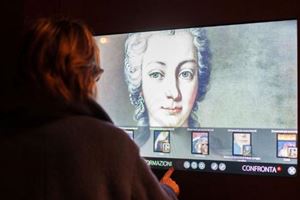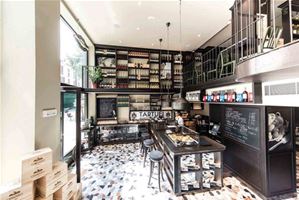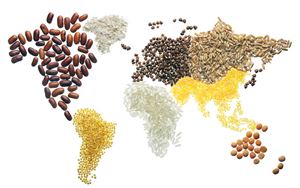Is
there a connection between art and medicine? New York-based artist Janice
Gordon has been exploring the relationship between these two seemingly
dissimilar disciplines. In her art (see www.janicegordon.net), Gordon takes the
viewer on a border crossing journey into and out of the human body as she
considers the perception of the body from ancient times to the contemporary
world. Her works, currently on display at La Specola in the exhibit
Embodiments: Medicine, Metaphor, Metaphysics, explore the apparent dualisms
between medical practices and the poetics of the body; between matter and spirit,
and between the external and the internal. Implicit in her work is the question
‘What is embodied?’
What
first drew you to the heart?
I
started working on the heart because more than 30 years ago my mother died of
heart problems. I was very healthy and exercised regularly, but in 2006 I also
had a heart attack. I was already an artist at the time, and although I knew a
lot about the heart from a metaphorical and spiritual point of view, I didn’t
know a lot about it from a physical point of view. I started investigating it
physiologically and anatomically. I wanted to know everything about it, and it
grew into a body of work. I started taking organic materials, like shells and
stones, and wrapping them in Japanese paper and creating these sculptures of hearts.
I called the series Matters of the Heart. Then, through an artist friend in
Toronto I met Dr. Newman, a cardiologist and electrophysiologist and also an
art lover. I was fascinated with the medical materials he used, and he offered
some to me; he thought they should be used in art as well.
What
medical materials do you use and why?
Catheters,
pacemakers, defibrillators, things that were in used in heart surgeries. Dr.
Newman invited me to Toronto. He allowed me to shadow him in the hospital and in
his appointments with patients. He allowed me to watch the electrophysiology
procedures, which test and treat the electrical system of the heart. It was a
great experience; I was literally in the operating room and saw everything. It
was incredible, really, to see how the medical materials I had started using in
my art were actually used in the operating room.
Thanks
to another doctor, I was then able to watch other surgeries: open heart,
thoracic, robotic and endoscopic surgeries. So, I take these experiences and
then I work intuitively. I take all the research I do and the experiences I
have and go to work. And Dr. Newman gave me tonnes of catheters,
defibrillators, pacemakers to use in my art.
In
addition to these medical devices and materials, I use such organic materials
as shells, stones, coral, Japanese paper and wax. I use a medium to make the
Japanese paper translucent; that’s what makes them so delicate. I deal with a
lot of ‘found objects’ in my art; I was given a vast collection of shells, stones
and seeds by Natalia Grande, an Italian American woman from New York. She
gathered these things with her husband every summer on their holidays. Through
Grande’s collection I started another body of work called Nature Recollected.
Through this series and the Matters of the Heart series, I believe I am
honouring both Natalia and all of those people who have had their hearts
repaired.
What is the connection you see between fine art and
medicine?
As
an artist, one of the things that I find interesting is bringing together
different disciplines. Because what has happened in the scientific and
industrial revolutions is that everything has become very specialized. Five
hundred years ago, there wasn’t a separation between the disciplines. Take, for
example, Leonardo da Vinci: he was an artist and an inventor, he did anatomical
drawings, and so forth. However, over time, everything became separated and the
humanities and the sciences become viewed as discrete disciplines, even totally
different cultures.
Today,
however, I think people are beginning to say, ‘Hey, wait a minute, let’s start
talking about things as they are related, because they are related.’ And now you have departments in medical schools that
are called ‘Medical Humanities.’ With these specializations, doctors began to
look at patients’ health through tests, not so much by relating to their
patients. However, research found that doctors who could look at fine art and
identify the visual nuances would be better diagnosticians because they would
be more sensitive to the patient.
As
an artist, I like to deal with things that are apparent opposites. I like to
transcend these dualities, then bring them together and say, ‘Look: there’s a
relationship above the apparent opposite aspects.’ So, it has been interesting
for me.
What inspired your torso series?
The
work on the heart grew into the torsos because of an experience in the
operating room that got me thinking about the Middle Ages and ancient
breastplates. In ancient times, breastplates protected warriors from outward
harm. Now we protect ourselves mainly from inner harm, from chronic diseases. I
took the things that go inside the body, cast my upper torso in Japanese paper
and imbedded it with mica to make it translucent; then I took the instruments
that were used in surgery. I have made six of these torsos, and I have adorned
them with amulets, objects people used to use to heal themselves. My amulets
are actually transformed medical devices that have been used to repair, diagnose,
heal.
Tell me about your fourth body of work, Materia
Medica, on display at La Specola.
Materia medica manuscripts
are the precursors to what we call today pharmacology. They contained all of
the healing ingredients people used prior to synthetic chemicals, like herbs,
plants, and all sorts of substances to cure illness. I know the owner of this
particular materia medica book, so I
know that it is from circa 1700. Some pages had already been removed, so I
started to use those that survived in my art. I have also collected antique
anatomical images, art history images and bits from nature, like images of
birds and so forth, and I created collage paintings using the pages of the
manuscript.
What do ‘found objects’ mean to you?
I
believe that when I use found objects I carry part of the story of the object.
Catheters, for example, are devices that carry signals from people’s hearts. A
catheter goes inside a heart, and in one heartbeat, 3,000 signals go through
the catheter to a computer that makes a 3D map of the electrical system of the
heart. That object has history: it’s been part of our culture, someone’s
experience and, in this case, it actually was carrying signals from someone’s
heart.
Embodiments: Medicine, Metaphor, Metaphysics
Until
January 31, 2013
La
Specola Zoological section,
Museum
of Natural History of the University of Florence







